School of History Organizes Visits to Burial Sites of Massacre Victims on National Memorial Day
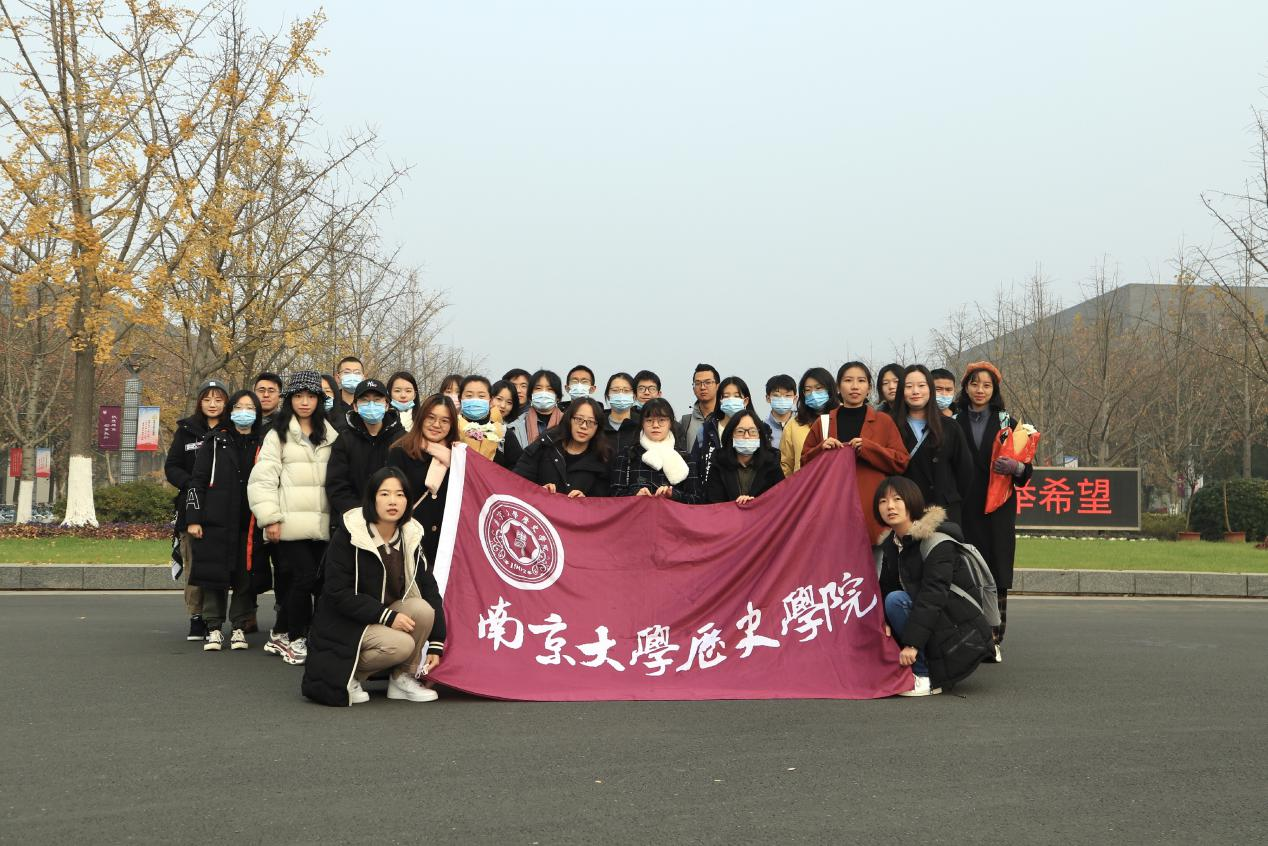
The Graduate Students’ Union of the School of History, Nanjing University, organized visits to the burial sites of the victims of Nanjing Massacre by Japanese invaders and to Stone City Park (National Defense Park) to hold commemorative ceremony on December 12, 2020.
In late autumn, we felted heavyhearted. Eighty-three years ago, it was at this time when the city of Nanjing was trampled, and more than 300,000 Chinese soldiers and civilians were slaughtered in over 40 days. Since then, Nanjing has not only a city that carries the historical heritage of thousands of years, but also one with historical memories inseparable from the country's tragic fate.
The Nanjing Massacre should not be regarded just as a misfortune or a national catastrophe. It is a lesson of suffering for all humanity to remember, a lesson that peace should be rooted in the conscience and actions of every individual. This is the way to remember history.
On the occasion of the National Memorial Day, the Graduate Students Union of the School of History launched a series of activities with the historians’ original aspiration of "manifesting good and precluding evil." Students, including undergrads, masters and doctoral students, from multiple schools have participated in these activities, including the School of History, the School of Humanities, the School of Marxism, the School of Information Management, and the Department of Mathematics.
The students presented flowers and mourned in silence in front of monuments in these burial sites for victims of Nanjing Massacre by Japanese invaders, including Caoxie Valley, Zhongshan Pier, Yijiang Gate, Arctic Pavilion, Taiping Gate, Wutai Mountain, and Hanzhong Gate.
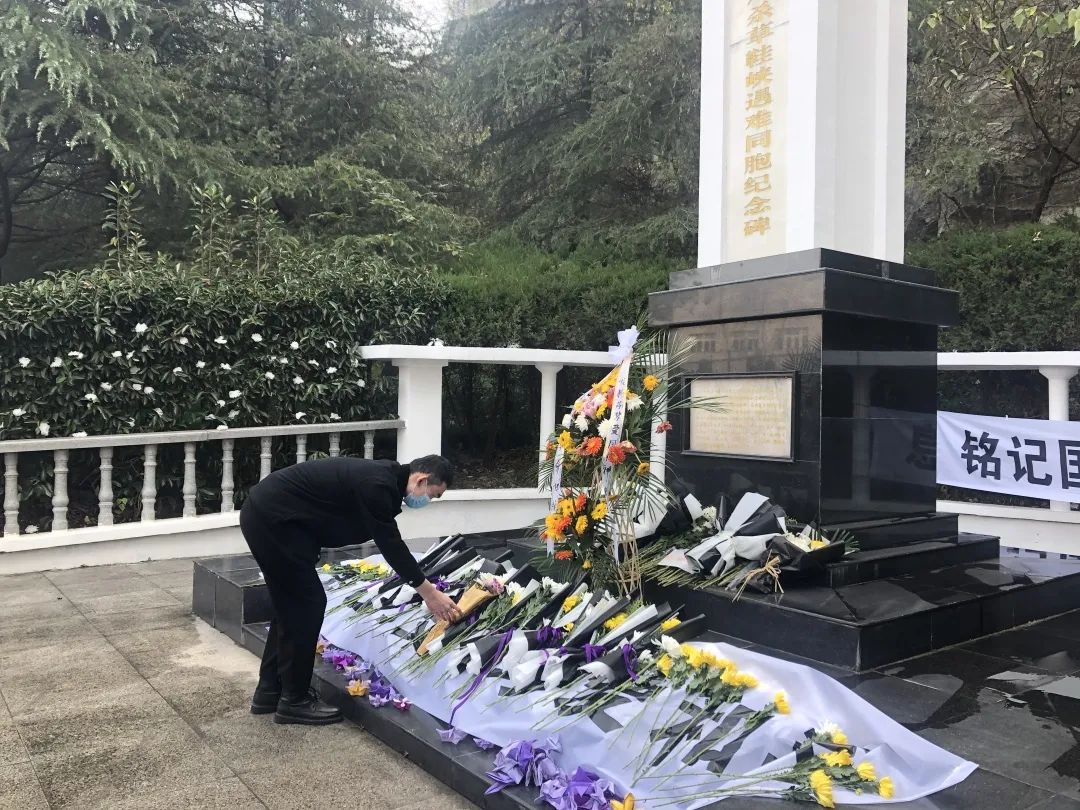
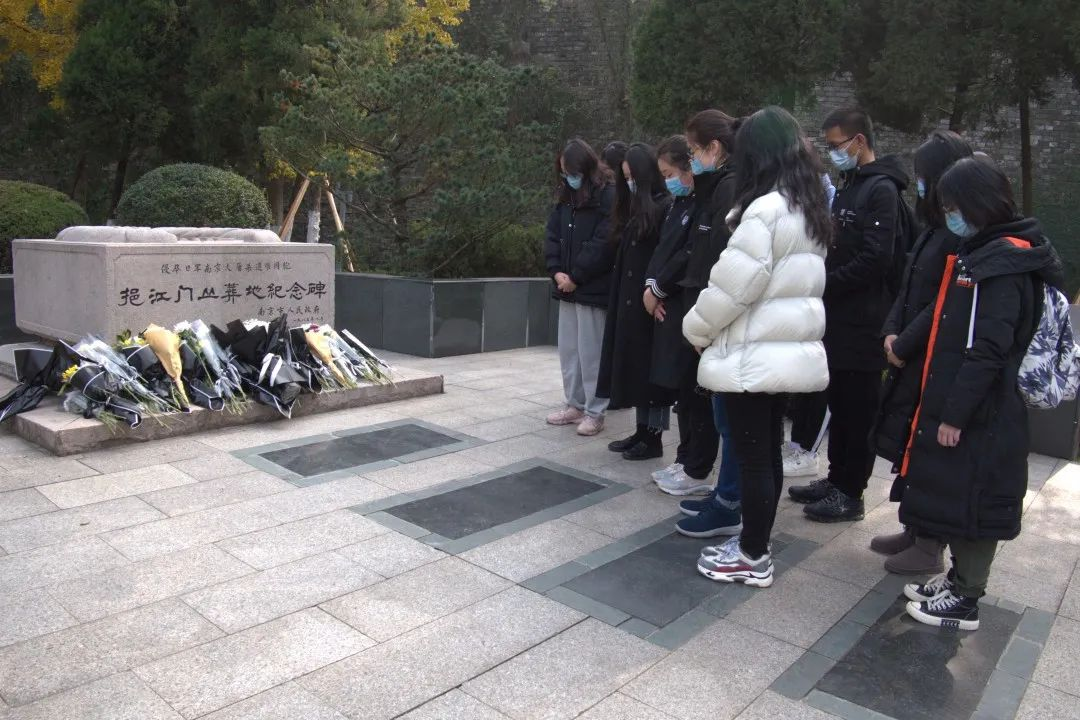
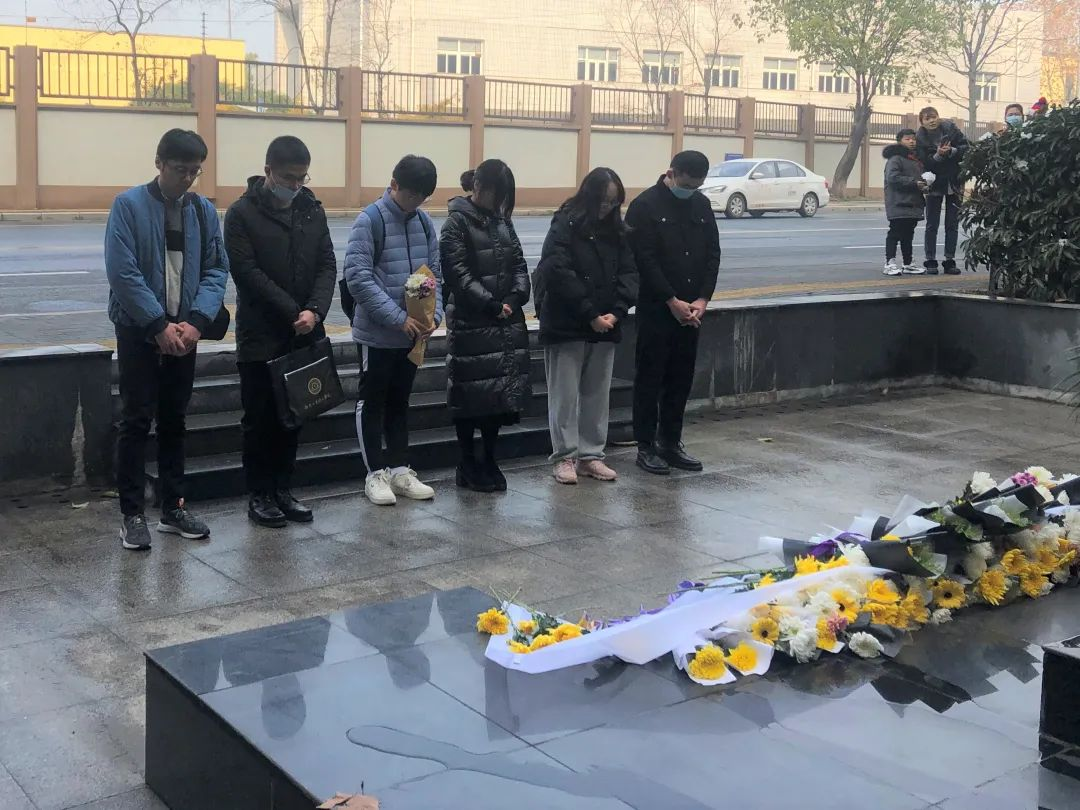
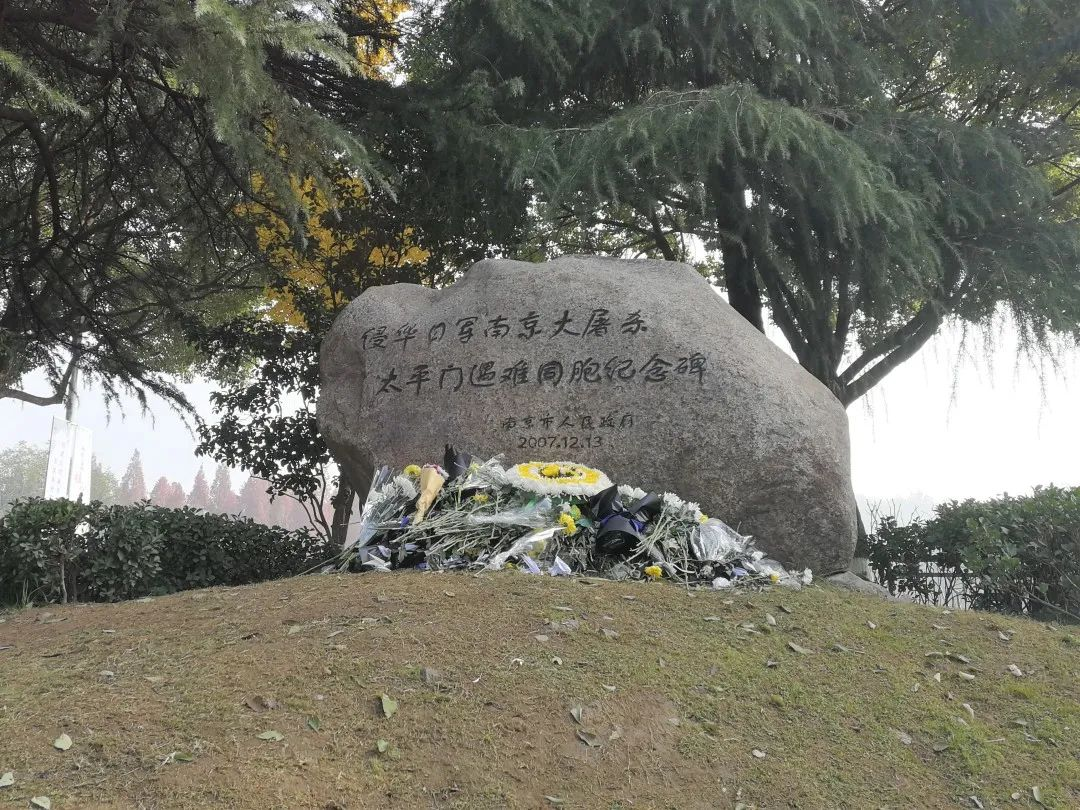
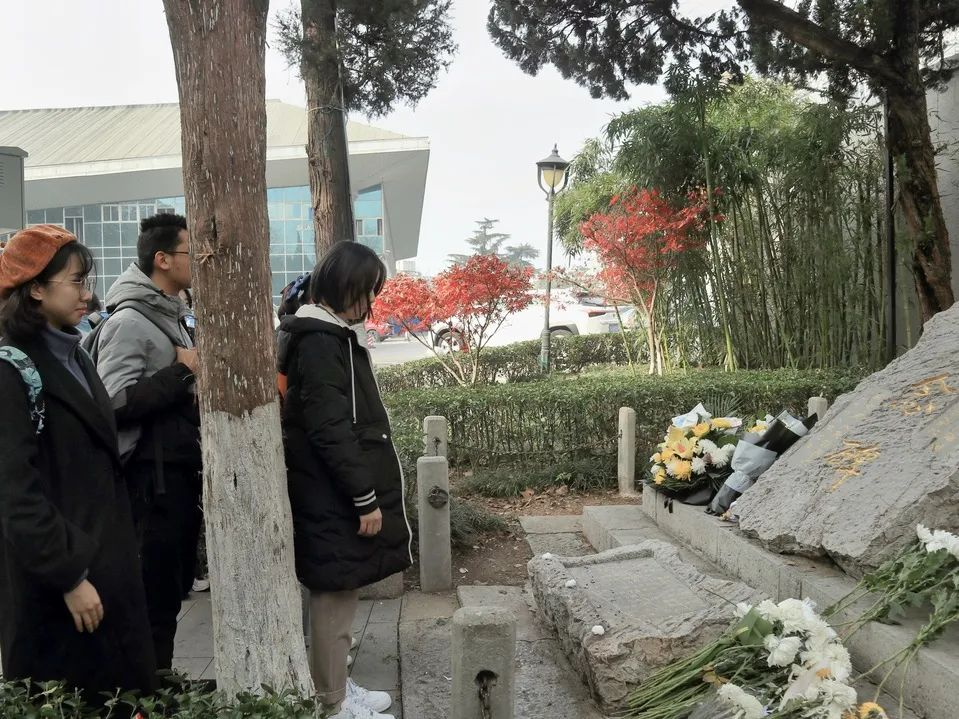
Among them, the Zhongshan Pier Monument is one of the relics of the Nanjing Massacre by the Japanese Invaders, where more than 10,000 Chinese were slaughtered. The monument was erected to remind us to remember history, strengthen ourselves, and revitalize China.
At the same time, as students of Nanjing University, we may have a deeper connection with this land: most of the victims buried in Wutai Mountain and Hanzhong Gate came from the refugee shelter of Jinling University. In the last days of their lives, how did they struggle desperately in the North and South Gardens of today’s Gulou Campus of Nanjing University? How hard is it for us to imagine that today’s prosperous and peaceful Nanjing was once a hell on earth?
After visiting the monuments, the students went to the Nanjing Stone City Park to climb the ancient city walls, see historical relics, and learn about national defense.
It was a hard day, but the students said that these commemorative activities on the National Memorial Day were quite educational.
On a micro level, these activities can give us an in-depth understanding of the history of the Nanjing Massacre, so that every student can understand that a happy life is hard to come by and they should cherish the present and look forward to the future.
On a macro level, these activities can enhance the national cohesiveness and help students remember our national sorrow and humiliation. We should shoulder the responsibility of working hard for the prosperity and power of China.
Over the years, the faculty and students of the School of History of Nanjing University have made unremitting efforts to study the history of the Nanjing Massacre.
Since 2000, Nanjing University has cooperated with Nanjing Normal University, the Second Historical Archives of China, Nanjing Municipal Archives, Jiangsu Provincial Academy of Social Sciences and other institutions in the collection and compilation of materials of Nanjing Massacre. Over 100 specialists and professors have participated in this project. The fruit of the efforts is the series Historical Materials of Nanjing Massacre, which took ten years to complete.
This series was listed as a key project for publication in the "Eleventh Five-Year Plan." It has a full set of 72 volumes and an additional 6 volumes, with a total of 42 million words.
It has a comprehensive collection of first-hand materials from the perpetrators, victims and third parties, involving languages of Chinese, English, Japanese, German, Danish, Italian, Russian and others. Two-thirds of the materials are important documents rarely seen before.
The Institute of Nanjing Massacre History was inaugurated in the Zhixin Hall of Zhixing Building in Nanjing University on April 29, 2006. It was jointly established by the Publicity Department of the Jiangsu Provincial CPC Committee, the Publicity Department of the Nanjing Municipal CPC Committee, and Nanjing University.
The Nanjing Massacre: A Complete History, published in 2012, was edited by Zhang Xianwen, a professor at Nanjing University and a specialist in the history of the Republic of China. The book has 14 chapters and nearly 1.1 million words. This is another major achievement in the field of the Anti-Japanese War research, especially Nanjing Massacre research, in China’s academic community after the publication of the Historical Materials of Nanjing Massacre.
Since September 2016, the Oral History Association of Nanjing University and the Memorial Hall of the Victims of the Nanjing Massacre by the Japanese Invaders have jointly launched a project to collect testimonies from the survivors of the Nanjing Massacre, trying to use individual lives to evoke the memory of suffering by the entire society.
In September 2020, General Secretary Xi Jinping pointed out at a symposium in commemoration of the 75th anniversary of the victory of the Chinese People’s War of Resistance Against Japanese Aggression and the World Anti-Fascist War: “Past experience, if not forgotten, is a guide for the future. We commemorate the victory of the Chinese People’s War of Resistance Against Japanese Aggression and the World Anti-Fascist War, condemn the brutality of the invaders, and keep in mind the historical experience and lessons. This is not to perpetuate hatred, but to arouse kind people’s yearning for peace and perseverance. We should learn from history, look into the future, and cherish and maintain peace, so that the Chinese and Japanese peoples will be friendly from generation to generation and the peoples of the world will enjoy peace and stability forever."
The clear past serves as a reminder for future generations. Today, we commemorate the victims and visit the Nanjing National Defense Park. This is to practice the idea of "learning from history and looking into the future." We hope that by remembering and reflecting on history, we will cherish and hold on to peace. "Let the dead fall asleep. Let the souls settle down. Turn the butcher’s knife into a warning bell. Carve the names of the victims into history lessons. Let children no longer be frightened. Let mothers no longer cry. Let wars stay away from humanity. Let peace prevail in this world."
(Academic Department of the Graduate Union)

